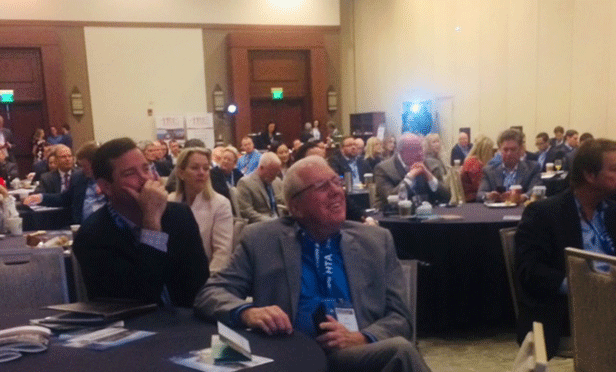SCOTTSDALE, AZ—The US healthcare system is under constant pressure to find lower-cost delivery options regardless of changes to healthcare policy. This has resulted in an increase in ambulatory care facilities like urgent-care centers and diagnostic laboratories. In a recent non-traditional retail spaces for medical facilities panel at RealShare Healthcare, we learned that these retail-oriented facilities are expected to continue to rise in popularity.
According to Andrew Romerdahl, senior director of real estate and construction at Providence St. Joseph health, one thing to look for in these type of facilities is typical access. “Making it convenient for the consumer is a relatively new topic for the healthcare system,” he said. “Now it is about how we can make it possible for people to not disrupt their lives to get the services they need. We are trying to get out of the business of sick care—it isn't a sustainable model in the future.”
Speaker Julie Johnson, principal at Avison Young, added that there has been a lot of vacant retail spaces and healthcare practices and retail have similar checklists so it makes sense. “All of the different signage, locations for convenience, parking etc. in a retail facility matches what healthcare providers want, and the cost of the remodeling is similar to what it would be in any building and it is very advantageous for the retailers because it is lower than what they could do elsewhere, so it is really a win win.”
Johnson adds that although retailer owners don't usually offer the same kind of TI's that a traditional investor would, there is usually there is a high credit behind a healthcare provider and they are prepared for the cost and used to doing the full buildout, so it isn't really an issue.
But one thing to consider, according to moderator Matt Bear, founder of Bear Real Estate Advisors, is that once a retail tenant mix starts going 20-25% not retail, that shopping center is lost. “The internet isn't going to kill traditional retailers, it is going to kill bad retailers.”
Changing topics a bit, Stephanie Anderson, national sales director of Housing and Healthcare Finance LLC, pointed out that the hospital is now being held accountable for so much. “They should be thinking about a hub and spoke system. I would like to see hospital systems really used those skilled nursing systems and renovate some of those spaces… Put a doctor in them and used them as a health center.”
She added that “Right now, health systems are having to grow in different ways than they ever have before. The more control you have over your patient, the better you feel that you can manage their mortality.”
Anderson said that “migration from inpatient care to outpatient care will continue over the next few years, but I do not believe this creates obsolescence in the existing care communities. Rather, I see an upward shift in acuity across the spectrum that has not peaked. Hospitals are the most effective with high-risk pregnancies, complex surgeries and traumas. They will continue to bear the burden of triaging and distributing ER patients to more appropriate settings but it will become more immediate as partnerships are built between mental health, skilled nursing, long term care and rehab hospitals.”
© Touchpoint Markets, All Rights Reserved. Request academic re-use from www.copyright.com. All other uses, submit a request to [email protected]. For more inforrmation visit Asset & Logo Licensing.








